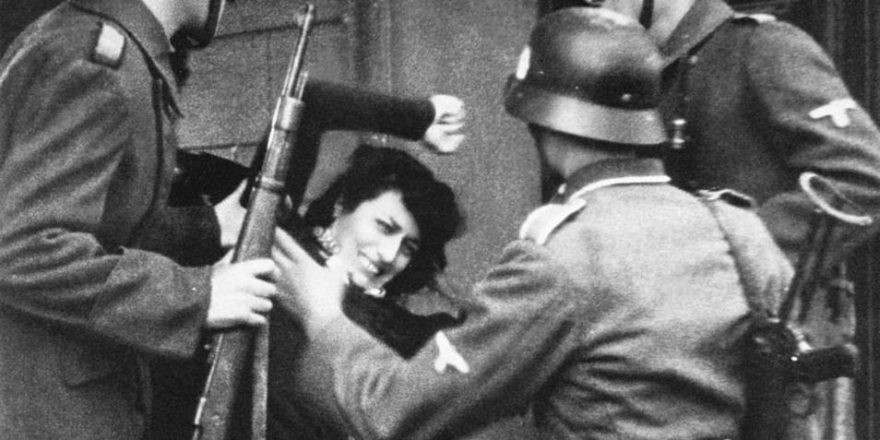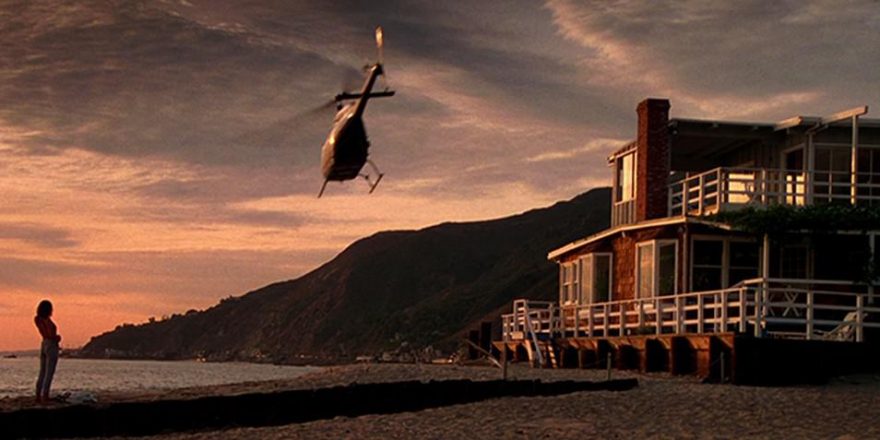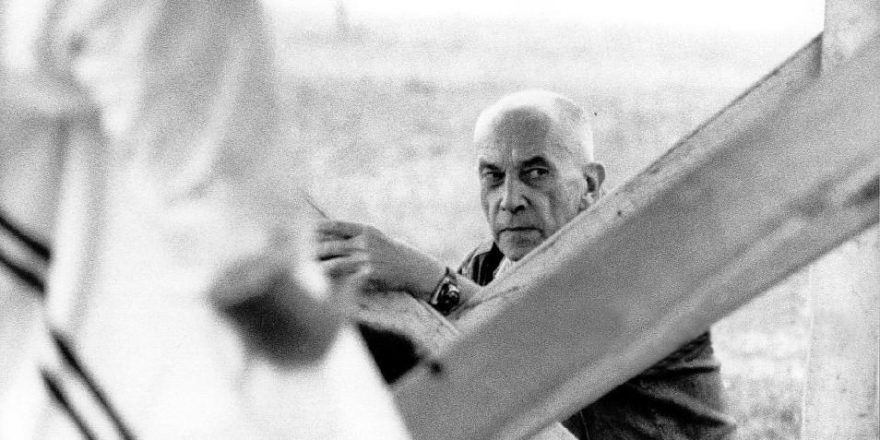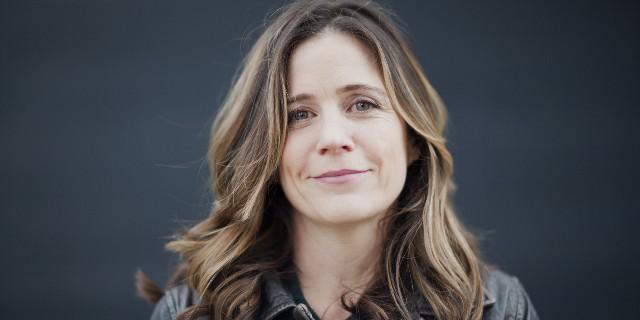I spent the end of August in Italy visiting my 91-year-old great aunt, a Brooklyn-born Jew who moved to Rome in 1950, just five years after Roberto Rossellini made Rome, Open City. She traveled in the right circles, as they say, and I managed to get a good story out of her about actress Anna Magnani unabashedly silencing a fancy dinner with a roaring belch. I went to see Rossellini’s film with her in hopes of more of the same, but instead got a Fellini anecdote that’s unfortunately not fit for print.
Rome, Open City kickstarted Italian neorealism, earning its rightful place on every film school syllabus. And it is famous for that scene — you know the scene, you know it in freeze-frame as well as in motion — in which Anna Magnani’s character, Pina, is shot by German troops in front of her family and neighbors. It is a brilliant sequence of editing: the gunshots a jarring interruption to the rhythm of her desperate chase, Magnani’s arms and dress airborne for a split second, the camera barely lingering on the aftermath. It goes by too fast and cleaves the film in two — all of the humor of the first half, gallows though it may be, vanishes from this moment on. Her death is like a punch in the gut, knocking the wind out of you.
The links between neorealist narrative films and documentary filmmaking are well-established, so I won’t belabor that point for too long, if only to avoid having to choose sides in the “hybrid” versus “chimera” versus “whatever” documentary terminology wars that have already torn our fragile documentary community apart. But so much of the power of film lies in its ability to stand as a document of a time and place; this is just as true of narrative films as it is of documentaries, both being able to give shape to our understanding of history. In Rome, Open City, the street scenes were shot in and amongst the city’s partially destroyed buildings as the dust from the occupation was still settling, just a few months after the Germans had withdrawn from the city. The shaky camera and out-of-focus closeups of the non-actors Rossellini cast, who themselves had just lived through all the same indignities of war that they were now recreating, lend the production the immediate and palpable gravitas it’s famous for.
Pierre Leprohon, in his dated but delightful book The Italian Cinema (a copy of which I found on my great aunt’s bookshelf, its cover featuring a lovely, lounging Sophia Loren), writes: “The fact that shooting [of Rome, Open City] had to be done in real streets and real houses for lack of a studio, the grayish photography due to the absence of power units and the brusque cuts due to the fact that the editing was done in bits and pieces and frequently improvised, gave this ‘reconstituted actuality’ a semblance of documentary authenticity. But these weaknesses become qualities in Rossellini’s film because the director himself was the first to feel the shock that he communicates to the spectator. This uncompromisingly direct film is a cry of revolt and suffering.” So much has been made of the gray quality of the film, the poor sound, the bad subtitling, that Rome, Open City’s mythology is intrinsically linked to these aesthetic elements. These qualities are as much a part of the story of the film as any of its plot points. If it looked slicker, if its roughness were sanded down, would it lose its power?
But there is also a strange and jarring theatrical melodrama that punctuates the film. The villains, particularly the effeminate and cruel SS Major Bergmann and his sidekick Ingrid, are sketched as one-dimensional evil caricatures — all high cheekbones and arched eyebrows — and their scenes are shot on sets that feel stilted and poorly set-decorated. I realized while watching it again in Italy that it’s this very awkwardness that is key to the film’s power, rather than the gritty “documentary authenticity” it’s most often praised for. So much is told in the shifts between the rawness of the on-location tenement building where Magnani’s Pina lives and the high camp of Major Bergmann’s candelabra-festooned officers’ mess and his brutal interrogation cells. Rome, Open City links neorealism to the Italian cinema that preceded it, the upper-class melodramatic “white telephone” films, and you can feel this transition in real time throughout the film. It’s not seamless at all, and that’s where some of its force lies — the very act of writing fiction is thrown into sharp relief against the bombed-out backgrounds; the artificiality of the staged scenes intercut with the reality of the streets. When Rossellini shifts from the studio set to the outdoors, you are feeling both the shift of time and the shift of fiction. You are made acutely aware that you are watching a movie.
Seeing the new restoration of Rome, Open City at Film Forum on a late rainy Saturday night back in New York put me in mind of Nick Pinkerton’s essential essay on viewership and 35mm for Film Comment: “Rather than by scarcity, our relationship with the media we consume is now dictated by the myth of everything-available-all-the-time-always bounty, which is pervasive and pernicious. The thinking goes: there is no pressing reason to make it to a screening, because you can see it on DVD, Netflix, Hulu, etc. — never mind that you’ll be seeing something entirely different when you do….”
It’s this last point, this idea of seeing different movies due to differing viewing contexts and formats, that really resonates with me. How we perceive and interpret our surroundings is key to making and understanding film. In Rome, Open City, the history we can now see clearly — the heroism of the priest and the partisan fighters, the eventual triumph of good — was, of course, not half as easy to perceive when it was made in 1945. The best movies make you aware of who, when and where in time you are as a viewer.
Watching this restored version, I found myself relieved that I didn’t need to contend with the possibility that a papering-over of its technical cracks might leave Rome, Open City neutered. There’s only so much that enhanced sound and better subtitling can do. What I did feel was the gap in context, between watching the film in Italy with a woman whose viewing life has spanned nearly a century, and viewing it in New York with an audience firmly planted in 2014, trying to grasp the slipperiness of history.







